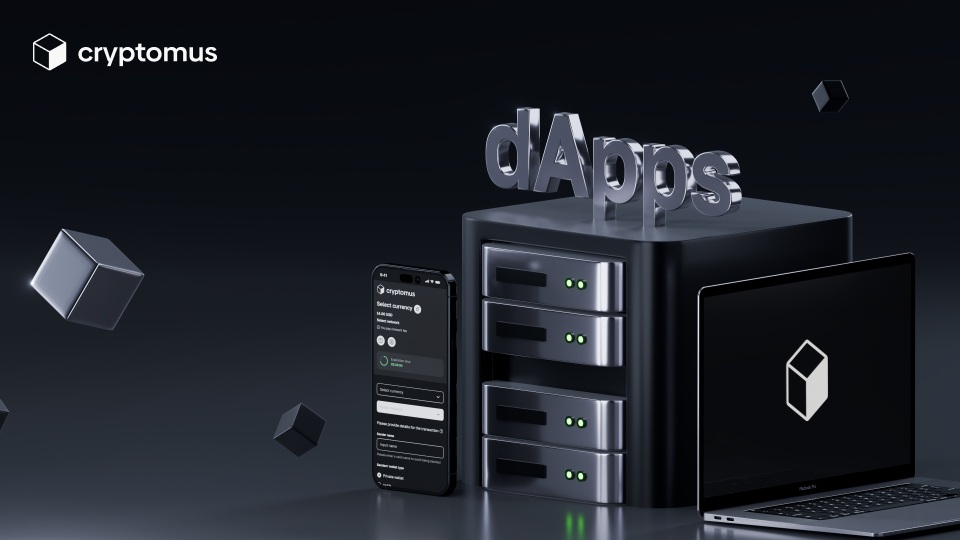
What Are dApps and How Do They Work
Decentralized applications (or dApps) are familiar to every crypto activist, and now the term is beyond the crypto sector, being implemented in other areas as well. And that is not only about finance. In this article, we discuss in more detail the dApps’ essence and the specifics of how they work.
What is a Decentralized Application (dApp)?
Let's start with the basics. A decentralized application (dApp) is software that operates on a blockchain. In other words, this is an application that is free of control by any organization, as its code is supported by a distributed nodes’ network. Examples of dApps include DeFi platforms, NFT markets, blockchain games, and social networks in Web3.
Instead of intermediaries in dApps, there are smart contracts — algorithms that automate processes. This gives users more control over their assets and data. Moreover, this feature provides transparency and builds trust between users.
Key Features of dApps
To better understand the nature of dApps, let's take a closer look at their main characteristics:
-
Global access. To interact with a dApp, all the user needs is an Internet connection and a compatible wallet.
-
Decentralization. dApps operate on blockchain with data distributed across multiple nodes, thus reducing single points of failure.
-
Open source code. Some dApps have publicly available codes, allowing users to contribute to the project.
-
Transparency. Anyone can verify the data, as it is recorded on the blockchain.
-
Smart contract support. A self-executing mechanism makes it possible to work without middlemen; this also makes data resistant to censorship.
-
Tokenization. dApps often use their own tokens to manage or incentivize network participants.

Types of dApps
We have already mentioned that dApps apply to various fields. Now let's provide more details:
-
Financial dApps. This is the most common application area, which focuses on providing financial services, such as payments, lending, trading, yield farming, etc.
-
Gaming dApps. These are blockchain-based games where players own and trade digital assets, such as NFTs or tokens.
-
Social media dApps. These include decentralized platforms for communication, content sharing, and community building, which occur without moderation.
-
Infrastructure dApps. These applications provide basic services for other types, such as data storage, identity verification, and oracles.
-
dApps for businesses and supply chains. This type helps track goods, verify their authenticity, and increase the business transparency in general.
Examples of Popular Decentralized Applications
Now it’s time to learn some examples of popular dApps:
-
Aave. This is a decentralized platform where users can earn interest and take out cryptocurrency loans.
-
MakerDAO. Another financial platform — a protocol that issues the DAI stablecoin and provides crypto loans with excess collateral.
-
AxieInfinity. This is a game where players collect, breed, and battle NFT creatures called Axies.
-
Decentraland. This application is a virtual world; there, users buy land, create content, and monetize their experiences.
-
OpenSea. The application is one of the largest NFT marketplaces, where users buy, sell, and exchange digital collectibles.
-
Chainlink. An oracle network that connects smart contracts with real-world data and APIs.
How to Create a dApp?
If you are interested in how you can build a dApp yourself, we suggest you learn about it in our algorithm:
-
Step 1: Choose a use case. First, decide on the problem your dApp will solve or define its goal to understand what parts the chain should contain.
-
Step 2: Choose a blockchain. Choose a network (such as Ethereum or Solana) based on the ecosystem components, speed, and fees you prefer.
-
Step 3: Develop the architecture. Plan the application interface, including the use of smart contracts, wallet integration, and off-chain services (such as oracles).
-
Step 4: Test the application. Integrate wallets and check the program before officially releasing it.
-
Step 5: Launch the dApp. Declare the application on the main network and monitor performance and user activity.
So, dApps are an optimized version of regular applications thanks to their decentralization. This allows them to be used in more fields and under better terms. However, it is worth remembering about responsibility, as decentralization also carries certain risks from scammers — you can read about how to avoid them in this article.
Have you already used dApps, or are you just planning to? Tell us about your experience in the comments!
Rate the article








comments
0
You must be logged in to post a comment